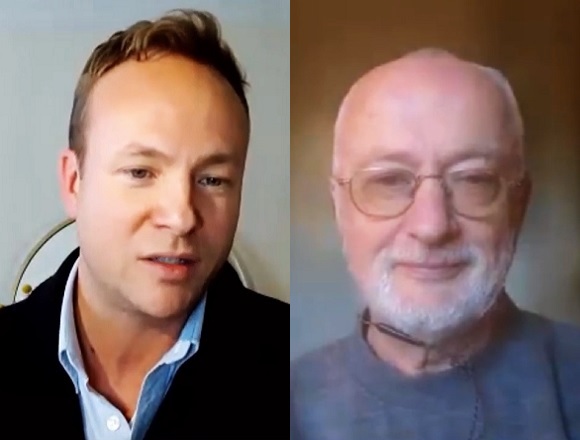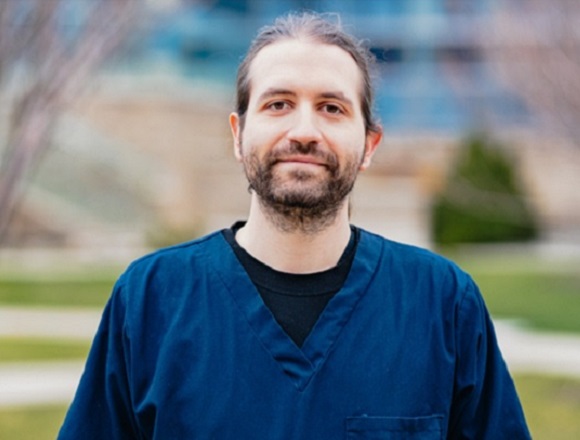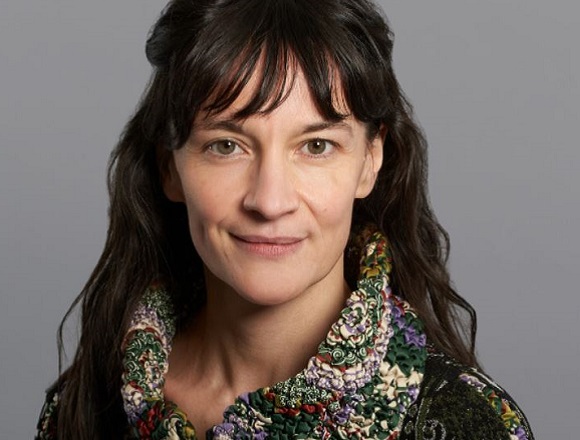David Wheeler, MB, ChB, MD, Honorary Consultant Nephrologist at the Royal Free London National Health Service (NHS) Foundation Trust, professor of kidney medicine at University College London, UK, researcher of several large-scale clinical trials on lipid-lowering regimens, calcimimetics, and SGLT-2 inhibitors in patients with chronic kidney disease, and coauthor of clinical practice guidelines for several organizations, including Kidney Disease: Improving Global Outcomes (KDIGO), joins Roman Jaeschke, MD, MSc, critical care physician and methodologist, to discuss the evolving approach to the treatment of kidney disease over decades.
Contents
- What is KDIGO?
- Kidney disease: A brief history of prevention
- Advanced renal dysfunction: Effects of treatment
- SGLT-2 inhibitors: Mechanism of action
- Advanced kidney disease: Management in details
- LDL reduction in CKD
- SGLT-2 inhibitors: Is there a class effect?
- GLP-1 receptor agonists in CKD
Transcript
Roman Jaeschke, MD, MSc: Good morning. Welcome to another edition of McMaster Perspective. This part of the McMaster Perspective series is devoted to interviewing opinion leaders in different areas of medicine, and it’s my immense pleasure to welcome professor of kidney disease Dr David Wheeler from University College London. He has an immense number of titles and accomplishments, so maybe I will ask him to introduce himself and tell us about the most important aspects. Professor Wheeler.
David Wheeler, MB, ChB, MD: Roman, thank you very much and thank you for giving me this opportunity to contribute. I’m David Wheeler. I’m a nephrologist and I work in London in the United Kingdom (UK). My primary affiliation is with University College London, so I’m a university professor, but I have an honorary contract with the National Health Service (NHS) and I work at a hospital called the Royal Free Hospital in North London. Those are my main roles in my usual day job.
Roman Jaeschke: OK, maybe I will start with one of your roles. When I looked at your publications record, I noted a lot of references to something that became part of our nephrology world, which is Kidney Disease: Improving Global Outcomes (KDIGO). I believe you were part of it from quite the early stages and I wonder if we could spend a few minutes talking about that particular organization.
David Wheeler: Yes, of course. KDIGO is a not-for-profit organization and it’s based in Belgium in Europe. Its main remit is to improve patient care by producing evidence-based clinical practice guidelines. It’s basically taken over as the body in nephrology that produces evidence-based guidelines that are now being used increasingly across the world, meaning that local societies and local organizations are stopping to produce guidelines and they’re using the international KDIGO guidelines.
The other thing that KDIGO do very well is they organize controversies conferences. Where there is an area in nephrology where there is uncertainty or new trials that perhaps don’t give a clear answer or [there is] disagreement among experts, KDIGO will arrange a controversies conference on that topic and will bring those experts together to discuss the topic, and will produce a conference report that crystallizes some of the main issues, quotes those opinions, and may in fact lead to, in some cases, the triggering of a guideline update, because it’s perceived that there is sufficient information within that controversy to actually write down some clear guidance for clinicians.
Roman Jaeschke: I have some experience in thromboembolic guidelines and sepsis guidelines and, clearly, coordinating and centralizing it allowed for dramatic savings of time and effort and also producing higher-quality guidelines. I’m in a hospital that is a major nephrology center and I see how often the name is used. I want to congratulate you on your role in it. I suspect we’ll hear a little bit more about it.
You mentioned that KDIGO is improving global outcomes. I understand from our discussion that we finished our medical school almost simultaneously. At that time the only medication for heart failure (HF) was digoxin. But the only advice I remember… Maybe there was something more, but what I remember is the advice from the nephrologist to their patients to limit the amount of protein. I suspect in the meantime the number of preventive interventions that were to slow the progression of kidney disease increased. I wonder if you could take our listeners or viewers through the last few decades of development in this area and maybe we’ll end up where we are today. How did it happen? Where is the road from there to now?
David Wheeler: I remember dietary protein restriction very clearly and as a junior doctor working in a kidney unit in the UK, I remember us using dietary protein restriction as an intervention to slow progression of kidney disease.
Let’s just think a little bit about what we’re talking about. Chronic kidney disease (CKD) has many different causes, the most common of which is diabetes. We always want to know what the underlying cause is, what’s caused that underlying kidney damage. But in many of these patients, even if we do know what that underlying cause is and try to fix it, there is progressive loss of kidney function over time, and we know that that’s characterized by scarring and fibrosis in the kidney. There’s been a focus over recent years on interventions that slow down that final common pathway of kidney damage, delay the needs to put patients on dialysis machines, and prevent patients from needing these expensive therapies.
Low-protein diets popular in the 1980s and 1990s… We did some proper clinical trials. Well, I didn’t, I was too young then, but some proper clinical trials were done and I remember very clearly seeing one of those trials presented at the American Society of Nephrology meeting. That inspired me to want to do clinical trials when I had established myself as a nephrologist. Those trials showed that there was probably a marginal effect of dietary protein restriction. But of course, protein intake influences creatinine generation and blood measurements of creatinine. I think there was a lot of debate about whether we were just actually changing the measurements that we were using for kidney function by changing the amount of protein going into the patient.
The next breakthrough really came at the turn of the century, around 2000, where we saw several trials of angiotensin-converting enzyme inhibitors (ACEIs) and later angiotensin receptor blockers (ARBs) in patients with CKD, both diabetic and nondiabetic CKD, [with] most of these patients having protein in their urine. We saw that randomizing patients to ACEIs or ARBs compared to placebo therapy actually slowed down the progression of kidney disease. We came to understand that that was probably because these drugs reduce pressure within the glomeruli, within the kidneys, so they are blood pressure–lowering drugs that work really well in the kidney, in the glomeruli, and by reducing intraglomerular pressure, they reduced kidney or glomerular damage and therefore progression of kidney disease.
So, we got patients onto ACEIs or ARBs. We don’t tend to use the 2 in combination. We then waited about 15 years, possibly longer, for the next development. The next development came along with the sodium-glucose cotransporter-2 (SGLT-2) inhibitors. These were drugs that work in the kidney. They were developed to treat diabetes and they were developed to stop the kidney reabsorbing filtered sugar, so the patient wees out that filtered sugar in their urine, and that reduces their blood sugar and their hemoglobin A1c (HbA1c) and improves their diabetic control.
Interestingly, these drugs had to undergo cardiovascular safety studies mandated by the regulators to ensure that they didn’t increase cardiovascular risk. That’s because some of the previous diabetic drugs, particularly the thiazolidinediones, actually enhanced cardiovascular risk in diabetic patients despite lowering HbA1c. So, the new SGLT-2 inhibitors had to undergo these cardiovascular safety studies. These studies showed that not only were these drugs safe from a cardiovascular perspective, but they actually had cardiovascular benefits.
We also found in those trials some signals suggesting that these drugs had kidney-protective effects. That’s where I got involved with these drugs and I became involved initially in a study called CREDENCE, which was a study of the SGLT-2 inhibitor canagliflozin in patients with type 2 diabetes and CKD. Our hypothesis was that not only would the drug canagliflozin be beneficial in improving glycemic control in these patients, but it would also delay progression of their kidney disease and possibly reduce their cardiovascular risk.
We found that actually the drug wasn’t very good at lowering HbA1c in these patients. It’s a drug that works but, of course, through the kidney. But the kidneys aren’t working very well in these patients. So, we didn’t really lower HbA1c, but we saw quite a marked effect on kidney disease progression, a slowing of decline of kidney function in these people with type 2 diabetes and CKD. We also saw a reduction in certain cardiovascular events, particularly in HF hospitalizations but also in atherosclerotic events—heart attacks and strokes. So, here was a drug that in diabetic kidney disease slowed deterioration of kidney function and reduced cardiovascular risk. That was great news for kidney patients. We published that trial in 2019.
The next step for me was another trial called the Dapa-CKD trial. This was a trial of, as you guessed from the name, dapagliflozin in CKD and we started this before the CREDENCE trial results were published. But we took a brave step and that was to include patients who didn’t have diabetes. We were asking whether this drug, initially developed for the treatment of diabetes, might actually have kidney-protective properties in nondiabetic patients.
I was fortunate enough to co-lead this trial as a co-principal investigator with Hiddo Lambers Heerspink from the Netherlands. We led this trial, which finished just before the pandemic fortunately, and we were able to analyze the results during the pandemic where nobody could meet up and we found that, perhaps to my surprise, in patients in the trial who had nondiabetic kidney disease, the results were pretty much the same as for those with diabetic kidney disease. This drug slowed down the progression of kidney disease, delayed the date at which patients needed to start dialysis, reduced HF hospitalizations, and—this was a big surprise to me—reduced mortality rates. We hadn’t previously had a pharmacologic intervention that reduced mortality rates in patients with CKD. Of course, we celebrated and published those results.
There’s been a third study, published a little bit more recently, of empagliflozin in patients with CKD. This has also recruited nondiabetic patients and shown similar results. The results of these trials are very consistent: whether kidney disease is due to diabetes or not, these drugs have a beneficial effect.
Roman Jaeschke: That’s quite remarkable. Also, as you were talking, I remember the times—and you probably as well—when beta blockers were contraindicated in patients with HF, and ACEIs were contraindicated in patients with kidney disease, and then it was reversed. It’s actually a major argument for testing the different hypotheses, some of [the drugs] work spectacularly well.
A few questions… If I understand correctly, if you have a patient with reasonably advanced renal dysfunction, almost irrespective of the presence of diabetes, you would have this patient these days on an ACEI or ARB and you will have them routinely on SGLT-2 inhibitors? That would be kind of almost a default statement at the moment?
David Wheeler: That’s exactly what we’re doing and that is what current guidance suggests we should be doing.
Roman Jaeschke: Would you be able to estimate, in kind of understandable terms, the effects of such management? One thing is to say, “Oh, we decrease the risks by 5% or 10%,” the other is we delay the average dialysis by a month or 6 months, 2 years, or we need to treat 20 patients for one more to survive. Whichever way you would present it to your patients, to convince them that it’s worth taking it.
David Wheeler: I love that question. Talking to patients, I think you talk about delaying the day when they need dialysis; and with successful treatment, delaying that day so long in their lives that they never need dialysis so they grow old with kidney failure and they never need dialysis. That resonates with patients because they often fear dialysis.
I talk to patients in those terms and of course we have to always discuss the risks and the benefits of the drug. I always discuss the risks of SGLT-2 inhibitors that include fungal infections in the genital area, because they are weeing out sugar. There have been concerns about increased risks of amputation and ketoacidosis in the diabetics, but actually the benefits far outweigh the risks in the clinical trials.
In terms of cost effectiveness, all the cost effectiveness modelling that I’ve seen has shown dramatic benefits from prescribing these drugs. The one I remember is the one conducted in Australia whereby the analysis suggested that for every A$1 spent on SGLT-2 inhibitors, you saved I think it was A$6 within the health-care system, so you paid A$1 and you saved A$6 because you were delaying the hospitalizations and the expensive dialysis.
Roman Jaeschke: That’s extremely unusual from all economic analyses that you actually end up not with acceptable cost-effectiveness but with cost savings, which is almost unheard of in medicine—everything is more and more expensive.
A puzzling thing… I remember talking to Dr Hertzel Gerstein who worked with those drugs 10 or 15 years ago and I still don’t understand how they work, what they do. I mean, it’s either extremely simple: [they] cause glycosuria and some dehydration and blood pressure [lowering] and they are diuretics, or there is something very complex. What are your thoughts here?
David Wheeler: I never admit to knowing. I never concede or admit to knowing this, that I know how they work. I always suggest that there may be mechanisms that we don’t understand and we have to keep an open mind about how they work.
They certainly have diuretic effects and they are powerful diuretics when added on to other diuretic treatments like loop diuretics. They cause a loss of sodium in the urine and that may be how they work because that loss of sodium in the urine actually leads to a constriction of the small artery, the arteriole that feeds the glomerulus and that further reduces the pressure in the glomerulus. We have hypothesized that that is one of the ways that these drugs are beneficial. They have an effect on the pressure in the glomerulus just like ACEIs and ARBs do, but they constrict the inflow rather than dilating the outflow, which is what the ACEIs and ARBs do.
But how do they help in HF? There have been trials of these drugs now in patients with HF, both with preserved and reduced ejection fraction, and these drugs benefit those patients as well. Is there an SGLT-2 cotransporter in the heart? We don’t think so. Is this a kidney effect that’s benefiting the heart? I think nephrologists would always want to think that we can make the heart better by making the kidneys work harder, but the cardiologists don’t like that idea, they want to find a mechanism involving the heart and there have been very many hypotheses, but I think the honest answer is we don’t completely understand why these drugs are so effective if they are just diuretics. They must be doing something else.
Roman Jaeschke: I’m relieved. It’s not the naive internist who doesn’t know it, but the world expert doesn’t know it either.
In terms of prevention of CKD, I heard about blood pressure, I heard about a renin–angiotensin system inhibitor. I hear now about SGLT-2 [inhibitors]. What else do you consider when you have a person in front of you with advancing kidney disease? What other aspects of their care do you consider?
David Wheeler: That’s a really important question. Do we know the cause of their CKD and can we fix that? We always ask that. Have they got an obstructed renal tract due to a large prostate and they simply need a prostatectomy to rescue their kidneys? That’s the obvious question. Then, if the answer is we don’t know the cause of their CKD or we know the cause and we treated it and the kidney disease is still progressing, which usually happens, then we’re asking, of course, about the rate of decline of estimated glomerular filtration rate (eGFR), are they on the right medications, is their blood pressure under control, is their diabetes under control, are they on an SGLT-2 inhibitor as well as an ACEI or ARB?
We ask all of that, but we then look for complications of CKD. We look for the development of anemia, which is normochromic normocytic and doesn’t usually respond… Let’s put it another way: it’s not necessarily an iron deficiency anemia, it’s the anemia of chronic [disease], as we call it. We talk about phosphate control, because these patients develop a high blood phosphate [level], which we believe may have potentially harmful effects on the cardiovascular system. We look at the parathyroid gland function, we look at blood parathyroid hormone (PTH) levels because those often rise in CKD and that can be harmful to bone and possibly to blood vessels as well.
So, we are managing complications in these patients. We have a number of therapies. We have obviously treatments for anemia, including erythropoietins and most recently the hypoxia-inducible factor prolyl hydroxylase (HIF-PH) inhibitors, which are oral tablets that patients take for their anemia. We have drugs that bind phosphate in the gut and stop patients absorbing phosphate. We have different treatments for hyperparathyroidism: vitamin D analogues and drugs that mimic the effect of calcium on the parathyroid glands—calcimimetics. We’re managing all of these complications as patients go through their what we call the low clearance stages of their kidney disease, when their eGFRs are <25 to 20, and also managing these complications in patients who transition to dialysis.
Roman Jaeschke: All those interventions that you mentioned… We were talking about ARBs, SGLT-2 [inhibitors], and blood pressure control, I suspect in general, which have very good randomized controlled trial (RCT) type of evidence of major patient-important outcomes, whereas we aren't talking about calcium, parathyroid, phosphate? [Are there] mostly physiologic considerations or it’s so obvious that it improves patients’ quality of life or duration that there is no room for RCTs here?
David Wheeler: No, I think it’s just the opposite actually. I think it’s that we don’t have good evidence for these interventions and that’s not through lack of trying, but we don’t have clinical trials demonstrating that erythropoietins or HIF stabilizers improve clinical outcomes. You would think they might reduce cardiovascular risk, but actually, if anything, these drugs increase cardiovascular risk in these patients. We have done trials of phosphate-lowering therapies, calcimimetics, and we really haven’t shown clinical outcome benefits. We’re actually treating numbers, which is what nephrologists do well—they like to find a number that’s not normal and normalize it with a treatment so that the number is in the right box, it’s in the normal range.
Roman Jaeschke: Well, I suspect 80% of the time you are right. The question is with the remaining 20, whether we are not doing harm.
David Wheeler: Yes, we’re correcting physiologic abnormalities without good evidence that we are improving outcomes. Sometimes we improve symptoms, but we may not be improving clinical outcomes or haven’t been proven to be improving clinical outcomes.
Roman Jaeschke: Right. Well, one of the big things about evidence-based medicine is to distinguish the areas where we are sure that it’s worthwhile to put effort and resources from those where… As you have just mentioned, I remember those puzzling results of erythropoietin trials, which when I looked at them, I thought, “Why are we doing it?” You obviously are also advising smoking discontinuation?
David Wheeler: Yes, I should have said that lifestyle interventions: cessation of smoking, regular exercise, reduction of dietary salt intake—so, don’t add salt to the food, maintain an appropriate body weight—I think that’s the advice we give to [patients].
Roman Jaeschke: Any approach to lipids? Specifically in CKD patients. Or regular primary or secondary prevention?
David Wheeler: We have got some good trials of lipid-lowering interventions in patients with CKD and we did show that in a population of patients who were not yet on dialysis or were not on dialysis during the study, there were benefits to low-density lipoprotein (LDL) reduction with statins and statin combinations with ezetimibe.
We showed the expected reduction in atherosclerotic cardiovascular events: heart attacks, strokes, peripheral vascular problems, and so on. I think we do give patients with CKD statins. The data are less clear for those who’ve started dialysis and we try perhaps less hard in those patients to intervene with statins, we have other priorities in those patients because the clinical trials in dialysis patients have not been so clear in terms of the benefits of LDL reduction with statin therapy.
Roman Jaeschke: The SGLT-2 [inhibitors] is one class of drugs… By the way, are we thinking about these drugs that you mentioned, which you investigated, as a class effect’ drugs or do you differentiate between them in a major way?
David Wheeler: I think we’ve got probably 4 studies now of 4 different drugs suggesting kidney-protective properties. If you look at the totality of the data across all the studies, including the HF studies, we have a very consistent effect on kidney outcome. I think this is a class effect, but the studies were different and we don’t have the nondiabetic kidney disease data for canagliflozin, for example. But canagliflozin is probably a very good drug in early diabetes to prevent progression of kidney disease. I think [there are] nuances between drugs because of the way the trials were done, but I think most of us believe that this is a class effect.
Roman Jaeschke: My suspicion is you are using it in a way how it was tested, because there is also the drug and the dose.
David Wheeler: We are and the guidelines are also doing that if you’ve got a patient who’s got nondiabetic kidney disease and you want dapagliflozin or empagliflozin, because the trials of those drugs were done in patients without diabetes.
Roman Jaeschke: Right, and you had it tested, specific doses of them.
David Wheeler: And we know the dose.
Roman Jaeschke: The other tongue twister with glucagon-like peptide 1 (GLP-1)… SGLT-2 is clear. We’ve spoken about it, you presented your own accomplishments and others. Is there a role for GLP-1 [receptor agonists], other antidiabetic drugs, or [drugs] developed as antidiabetics? Do you use them in CKD patients?
David Wheeler: Very definitely. If you think about drugs you can use as kidney function declines, in fact you have to stop using some of the oral hypoglycemic agents. You have to stop using metformin. The sulfonylureas become problematic because of retention of drug metabolites, which can lead to hypoglycemia. The KDIGO guidelines on diabetic kidney disease or the management of CKD in the context of diabetes is very clear that GLP-1 [receptor agonists] are favorable and favored therapies.
Now, that is to control the diabetes. Do these drugs have kidney-protective properties? We’ve had some trials suggesting reductions in the amount of protein leaking into the urine, but that’s really a surrogate. But we do know that one big trial of one of these drugs, which was looking at kidney outcomes, has been stopped early on the advice of the Data and Safety Monitoring Board and we understand that that was due to efficacy. We’re very excited waiting for this trial to be publicized and we hope that GLP-1 [receptor agonists] will be added to our list of kidney-protective drugs.
I should say we’ve recently added mineralocorticoid receptor antagonists (MRAs) to that list of kidney-protective drugs as well, because there have been trials, or a big trial of third-generation nonsteroidal MRAs in diabetic kidney disease, showing benefits similar to what we see with ACEIs and ARBs but on top of ACEI and ARB therapy.
Roman Jaeschke: Maybe this would be again the history of patients with CKD being on several pillars of therapy like in HF.
Professor Wheeler, this is an amazing history of development, of where we are now or where we should be, assuming that the world can afford these drugs. When I’m thinking now about combination of SGLT-2 [inhibitors] with GLP-1 [receptor agonists], it’s obviously becoming quite a burden in a lot of not as resource-rich areas. But as everything in medicine, I remember the time where ACEIs or ARBs were inaccessible due to cost and obviously it’s a different game today.
I really appreciate you taking us through this history. I hope our listeners and viewers will appreciate it as well. I take the liberty of calling you again to comment on future major developments, of which you almost likely will be a part. Thank you very much.
David Wheeler: Thank you very much for having me and for giving this opportunity to talk.
Roman Jaeschke: It’s obviously our pleasure. Thank you and goodbye.
David Wheeler: Goodbye, Roman.
 English
English
 Español
Español
 українська
українська








